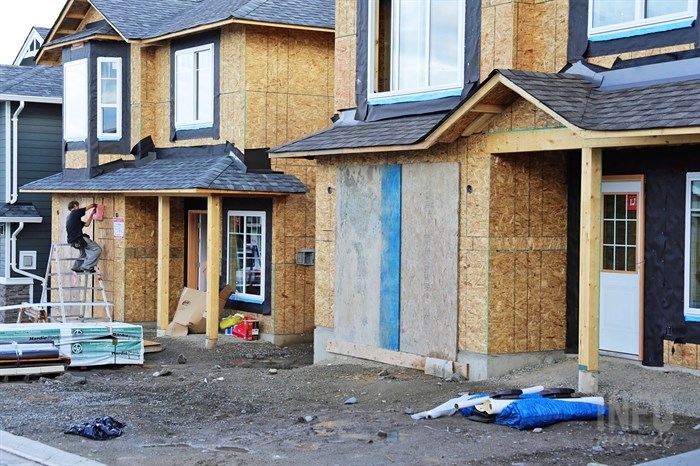Study says city policies drastically increase housing costs in Kamloops, Okanagan
A research paper explored how municipal government policies increase the cost of housing in B.C., and it showed that 40 per cent of a home’s cost in Kamloops and the Okanagan was due to the “zoning effect”.
While at Simon Fraser University, master’s student Nathan Zemp wrote a research paper about the staggering cost of the zoning effect called Housing Prices in British Columbia: Quantifying the Zoning Effect.
“The zoning effect is the amount that overall house prices increase in a city because zoning reduces the total amount of housing units that are allowed to be built,” he said in an interview with iNFOnews.ca.
Zemp collected data on 26 municipalities in B.C., including Kamloops, Kelowna, West Kelowna, Vernon and Penticton. The percentage of residential land zoned exclusively for single-detached and duplex housing in those five municipalities ranged from 65 per cent to more than 90 per cent.
The zoning effect, which also includes other policies that restrict and slow down development like minimum parking requirements, he said, accounted for roughly 40 per cent of the price for a house in Kamloops and the Okanagan, and as much as 44 per cent in Kelowna.
READ MORE: Kelowna trailer park residents face 'demoviction' from their affordable homes
He calculated the zoning effect by taking into account the cost of the land, the structure itself, and developers’ profits, and ended up with cost increases caused by zoning and the other policies that slow down development or increase prices.
He ended up meeting with the City of Kelowna’s planning department to show them his findings.
“They seemed really receptive to the ideas. They asked a lot of good questions about how it applies to Kelowna's particular situation, and I think it'll hopefully help inform their future official community plan updates,” he said.
Zemp suggested that making gradual changes to the zoning in large areas would allow for a lot more housing to be built without dramatically changing the look or feel of a neighbourhood.
“In each neighbourhood, you can build buildings that are just a little bit higher than the buildings that are already there. In a single-family neighbourhood, you could start allowing row houses and low-rise apartment buildings. In a neighbourhood that's more medium-density, you could start allowing buildings that are just a little bit taller, and so on and so forth,” he said. “You're kind of mimicking that natural growth, but through a more controlled and predictable way.”
In his paper he didn’t go into things like turning land in the Agricultural Land Reserve into residential land since it’s a short-term solution that would have long-term consequences.
“We see in places like San Francisco, where they never had an agricultural land reserve, they urbanized all of their agricultural land, and now they're still running into the same problem. If we got rid of the agricultural land reserve, we'd build out to the mountains, and in one or two generations, we'd be right back where we started,” he said.
He said eliminating the zoning effect entirely is not realistic, but reducing it from 40 per cent of a home’s cost to 20 per cent should be the goal.
“You can provide low-level density that doesn't change a neighbourhood that much, like multiplexes, townhouses and low-rise apartments, things that our development industry here in B.C. is really good at building and has a lot of experience building. If you allow those over a broader area, that's how you'll really unlock affordability,” he said.
To contact a reporter for this story, email Jesse Tomas or call 250-488-3065 or email the editor. You can also submit photos, videos or news tips to the newsroom and be entered to win a monthly prize draw. Find our Journalism Ethics policy here.
We welcome your comments and opinions on our stories but play nice. We won't censor or delete comments unless they contain off-topic statements or links, unnecessary vulgarity, false facts, spam or obviously fake profiles. If you have any concerns about what you see in comments, email the editor in the link above. SUBSCRIBE to our awesome newsletter here.




